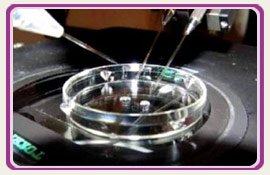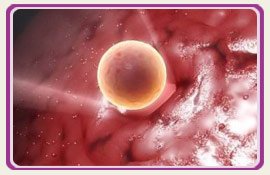Tubal ligation is a form of female sterilization. The procedure is done by tying, cutting or otherwise blocking the fallopian tubes. Ovum or eggs travel from the ovary through the fallopian tube and down into the uterus where they wait to be fertilized by sperm. Tubal ligation prevents eggs from reaching the uterus. Tubal ligation is usually a permanent procedure that prevents unwanted pregnancy. However, some women change their minds at a later point in their lives and want to reverse the tubal ligation.
Who Benefits from Tubal Ligation Reversal?
Any woman who wants her fertility restored after a tubal ligation procedure may opt to have the procedure reversed. Success of a tubal ligation reversal procedure depending on the type of ligation performed in the first place, your age and how long the tubes have been tied off.
Tubal Ligation Reversal Procedure
Who Benefits from Tubal Ligation Reversal?
Any woman who wants her fertility restored after a tubal ligation procedure may opt to have the procedure reversed. Success of a tubal ligation reversal procedure depending on the type of ligation performed in the first place, your age and how long the tubes have been tied off.
Tubal Ligation Reversal Procedure
A tubal ligation reversal procedure is considered an outpatient or same-day surgery type procedure. For any tubal ligation reversal procedure, you may be placed under general anesthesia. Air is inflated into your abdomen so the doctor can view the area better. Two or three small incisions are made into the abdominal area for the insertion of special laparoscopic or microscopic tools that are passed through the laparoscope, used to view the area. The camera on the end of the laparoscope allows the surgeon to view the surgical field on a monitor in the surgical suite.
The ligation reversal procedure is done through microsurgical techniques that open and reconnect fallopian tube segments. The actual name for this process is microsurgical tubotubal anastomosis or tubal reanastamosis. The tied-off or blocked ends of the fallopian tubes are opened. A stent is place in between the severed ends of the fallopian tube to replace the section that was cut away during the original ligation procedure. Each end of the previously severed tube is sutured to the connective tissues around the fallopian tubes to ensure they remain in place. After the two sections are connected, the stent is removed.
Another process called microsurgical tubal implantation is used when only the lower end of the fallopian tube has been left following a ligation procedure. The surgeon creates a new opening in the uterine muscle wall to prepare for the insertion of the remaining portion of fallopian tube.
The procedure can take anywhere from one to three hours with a recovery period of another two to four hours. You can generally resume your normal daily activities within a week or two. For tubal ligation reversal procedures using an open approach, a longer recovery period is required.
The procedure can take anywhere from one to three hours with a recovery period of another two to four hours. You can generally resume your normal daily activities within a week or two. For tubal ligation reversal procedures using an open approach, a longer recovery period is required.
How Much Does Tubal Ligation Reversal cost?
A tubal ligation reversal procedure can cost much more than the original ligation process due to its complexity. In the U.S., the cost of a tubal ligation reversal averages $6,000 and may not include consultations, lab work, or facility and equipment or other fees such as anesthesia. Depending on your geographical location and reversal technique, you may pay as much as $7,000 to $10,000.
Visitors traveling to destinations such as India or Mexico may save 35% to 50% or more, depending on the tubal ligation reversal technique utilized.
Who Performs Tubal Ligation Reversal?
Gynecologists and gynecologic surgeons or pediatricians are required to undergo basic medical training in addition to 2 to 4 years of postgraduate training in gynecology obstetrics or gynecology, also known as OB/GYN. Training focuses on immediate and direct patient care. After training and residency, physicians are able to sit for exams for certification.
Members of gynecologic and obstetrical professional and surgical associations and organizations are required to maintain their professional standing, obtain a lifelong learning and self-assessment education, complete cognitive expertise through examinations and licensing and undergo periodic evaluation for performance in practice.
Accredited and certified surgeons should belong to associations or other similar organizations or boards in the surgeon’s country of origin. Always verify the education, training and experience of any surgeon who may perform surgery and make sure they are licensed to practice in the facility of your choice.










